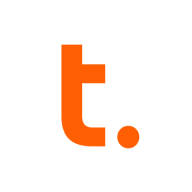

Teradata and AWS Lake Formation are significant players in the data management and analytics market; Teradata excels with advanced features while AWS Lake Formation is strong in integration within the AWS ecosystem.
Features: Teradata offers advanced query optimization, scalability, and robust parallel processing. Its architecture supports complex queries efficiently, making it suitable for large data volumes. Teradata's workload management and security features enhance comprehensive analytics and data warehousing. AWS Lake Formation is valued for its seamless integration within AWS services, managing access patterns effectively. Its centralized access management supports compliance and secure collaboration, enhancing data governance capabilities.
Room for Improvement: Teradata faces challenges with high costs and some limitations in SQL functionalities, affecting its scalability in multi-cloud environments. Enhancements in processing capabilities and OLTP optimization are necessary. AWS Lake Formation needs improvements in real-time monitoring, user interface responsiveness, and integration with non-AWS services. Its configuration complexity and onboarding process could be more flexible.
Ease of Deployment and Customer Service: Teradata can be deployed in various environments like on-premises, hybrid, and public cloud, with a positive reputation for technical support despite occasional slowness. AWS Lake Formation is cloud-centric, praised for its integration within AWS yet has been critiqued for its complex support and deployment processes.
Pricing and ROI: Both Teradata and AWS Lake Formation have premium pricing with potential for good ROI. Teradata's pricing is considered high, though its robust performance justifies the cost. AWS Lake Formation's pricing is cost-effective when integrated with other AWS products, with complexity in pricing depending on broader AWS service usage.
| Product | Market Share (%) |
|---|---|
| Teradata | 9.0% |
| AWS Lake Formation | 5.3% |
| Other | 85.7% |


| Company Size | Count |
|---|---|
| Small Business | 3 |
| Midsize Enterprise | 2 |
| Large Enterprise | 15 |
| Company Size | Count |
|---|---|
| Small Business | 28 |
| Midsize Enterprise | 13 |
| Large Enterprise | 52 |
AWS Lake Formation is a service that makes it easy to set up a secure data lake in days. A data lake is a centralized, curated, and secured repository that stores all your data, both in its original form and prepared for analysis.
Teradata is a powerful tool for handling substantial data volumes with its parallel processing architecture, supporting both cloud and on-premise environments efficiently. It offers impressive capabilities for fast query processing, data integration, and real-time reporting, making it suitable for diverse industrial applications.
Known for its robust parallel processing capabilities, Teradata effectively manages large datasets and provides adaptable deployment across cloud and on-premise setups. It enhances performance and scalability with features like advanced query tuning, workload management, and strong security. Users appreciate its ease of use and automation features which support real-time data reporting. The optimizer and intelligent partitioning help improve query speed and efficiency, while multi-temperature data management optimizes data handling.
What are the key features of Teradata?
What benefits and ROI do users look for?
In the finance, retail, and government sectors, Teradata is employed for data warehousing, business intelligence, and analytical processing. It handles vast datasets for activities like customer behavior modeling and enterprise data integration. Supporting efficient reporting and analytics, Teradata enhances data storage and processing, whether deployed on-premise or on cloud platforms.
We monitor all Cloud Data Warehouse reviews to prevent fraudulent reviews and keep review quality high. We do not post reviews by company employees or direct competitors. We validate each review for authenticity via cross-reference with LinkedIn, and personal follow-up with the reviewer when necessary.